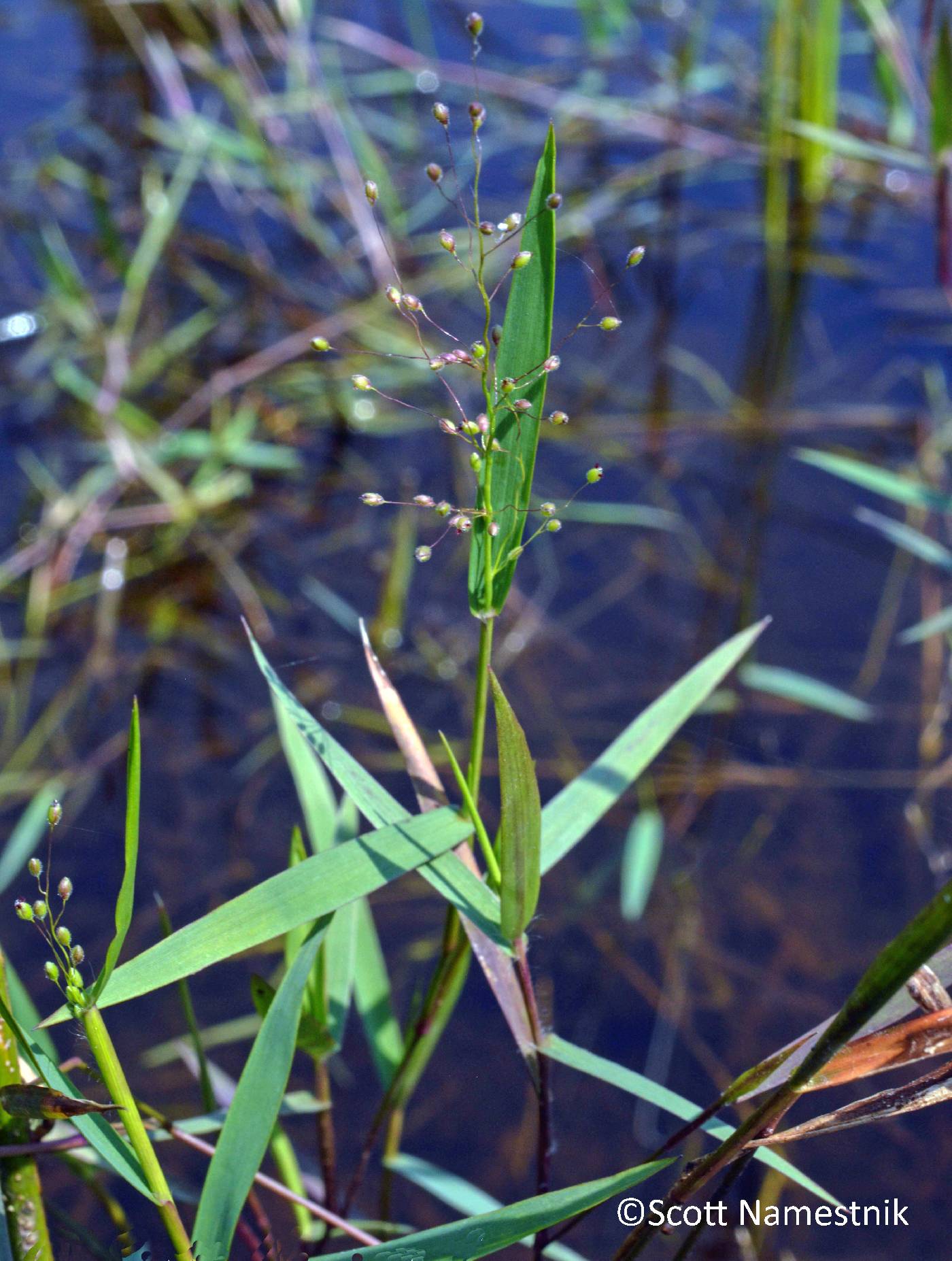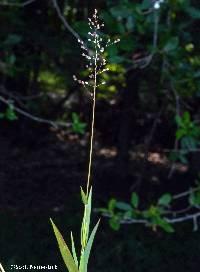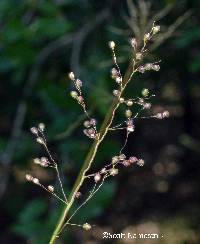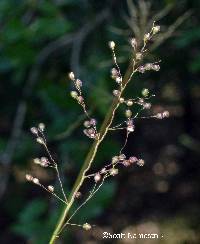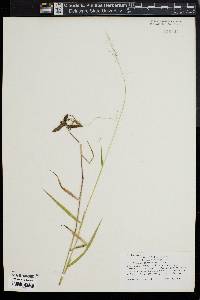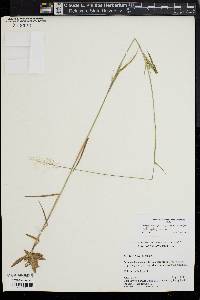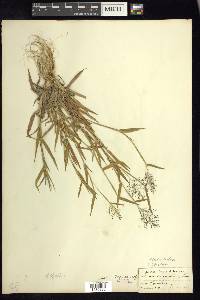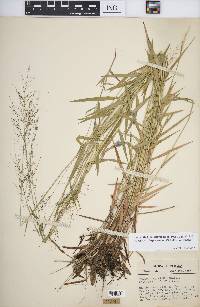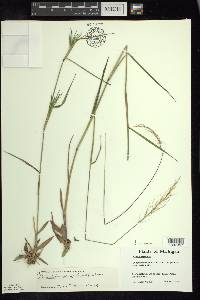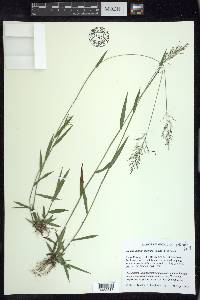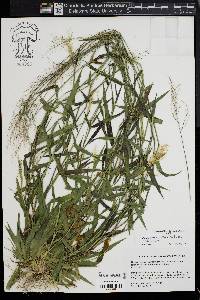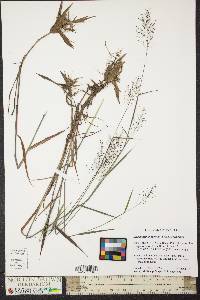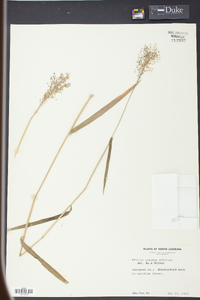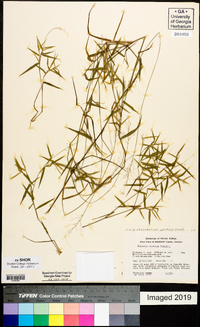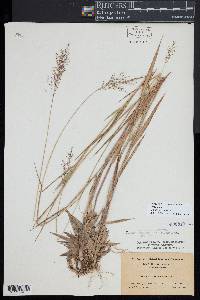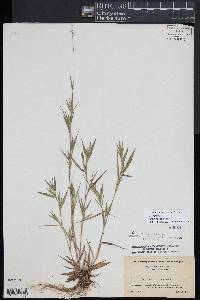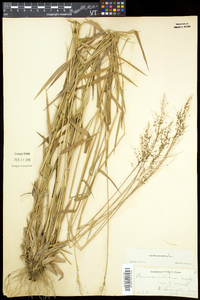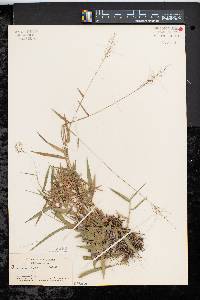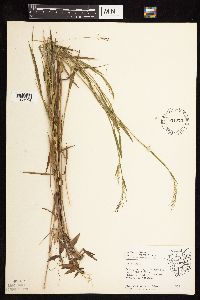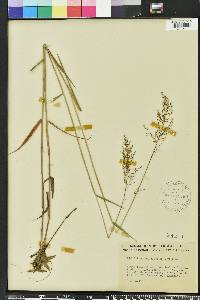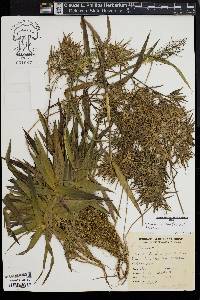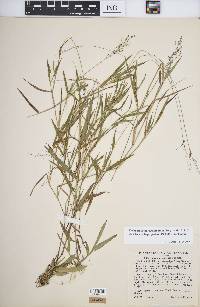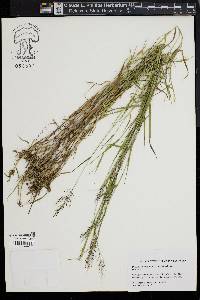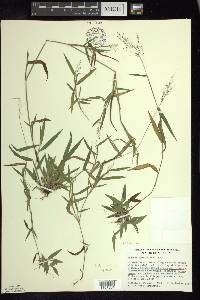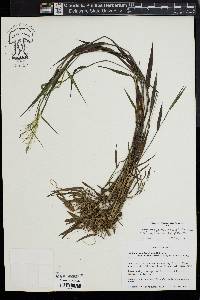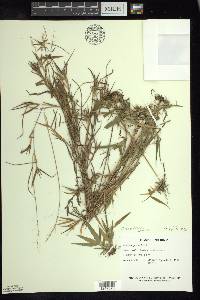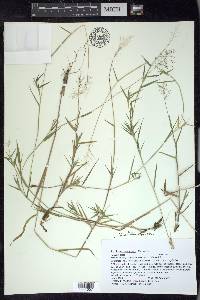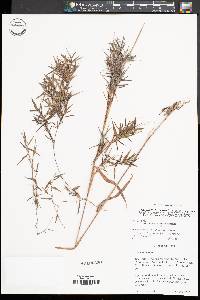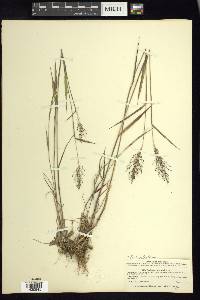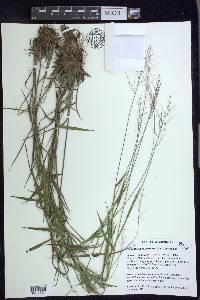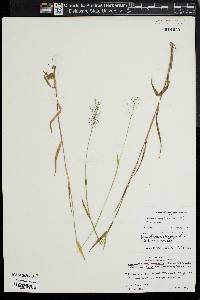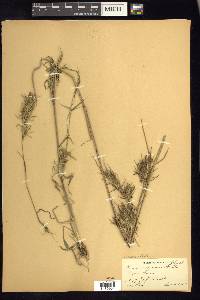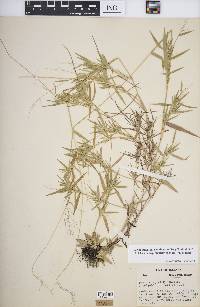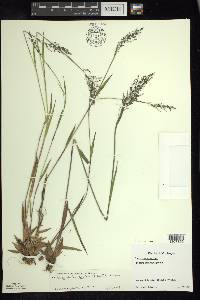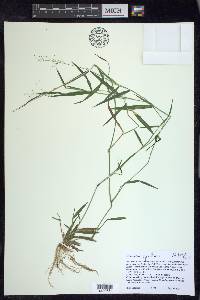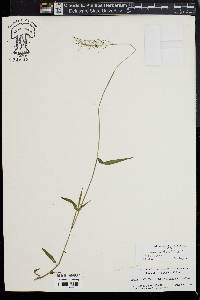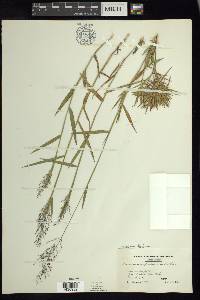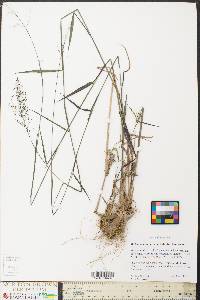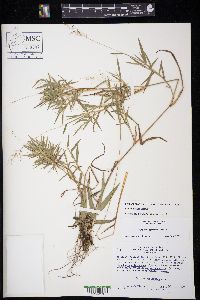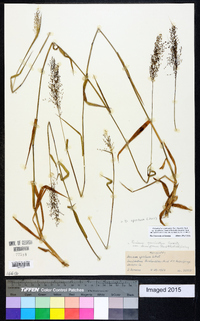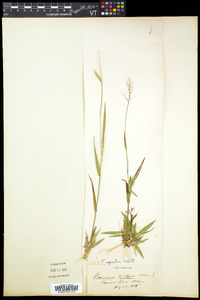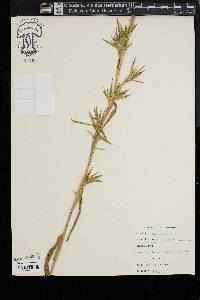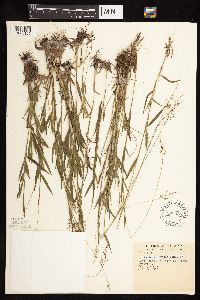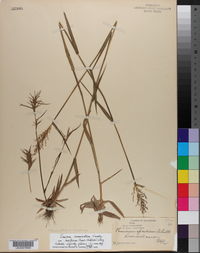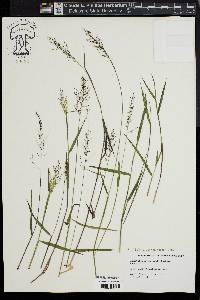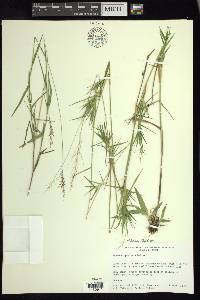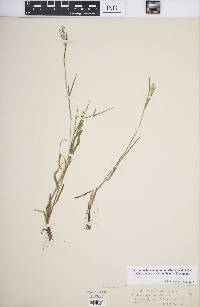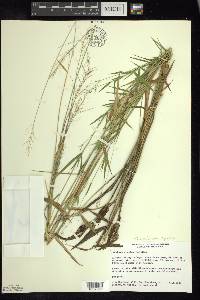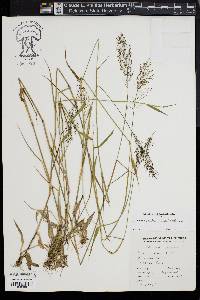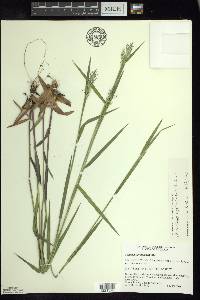
|
|
|
|
Family: Poaceae
Tapered Witch Grass
[Dichanthelium acuminatum var. densiflorum (Rand & Redf.) Gould & C.A. Clark, moreDichanthelium spretum (Schult.) Freckmann] |
Culms usually glabrous; nodes often swollen, glabrous; fall phase often with reclining culms, ultimately with fascicles of branches with greatly reduced blades and secondary panicles. Cauline sheaths usually glabrous; blades 3-9 mm wide, usually firm, ascending to reflexed, puberulent or glabrous abaxially, glabrous adaxially, with sparse papillose-based cilia at the bases. Primary panicles 4-12 cm long, 1/4-1/2 as wide as long, usually narrow, congested. Spikelets 1.3-1.9 mm, ascending to appressed, usually ellipsoid, usually puberulent (rarely glabrous). Dichanthelium acuminatum subsp. spretum grows in wet to moist, sandy or peaty soil, pine savannahs, and bogs. It is not a common taxon, but is most frequent on the coastal plain and around the Great Lakes. It is very similar to the more common, southern subsp. longiligulatum. It also resembles D. dichotomum in size and overall habit. Perennial herb, tufted 15 cm - 1 m tall Inflorescence: a terminal, branched arrangement of spikelets (panicle). Primary panicles atop the culms, narrow, dense, 4 - 12 cm long, one-fourth to one-half as wide as long, well-exserted. Secondary panicles (when present) atop the branches. Fruit: a caryopsis, indehiscent, enclosed within the persistent lemma and palea. Culm: upright or ascending or decumbent, 15 cm - 1 m long, round in cross-section, hollow. Nodes often swollen. Fall phase with reclining culms, bearing clusters of branches that have much-reduced leaf blades and secondary panicles. Spikelets: appressed to ascending, 1 - 2 mm long, ellipsoid with a blunt to nearly pointed apex, minutely hairy. Basal leaves: in a rosette. Blades shortly egg-shaped to lance-shaped, distinct from stem blades. Stem leaves: four to seven, alternate, two-ranked. Sheaths usually shorter than internodes, often hairless. Ligules and pseudoligules 1 - 5 mm long, composed of hairs. Blades firm, reflexed or ascending, distinctly longer and narrower than basal leaves, 6 - 12 cm long, 3 - 9 mm wide, lance-shaped with a rounded or almost heart-shaped base, parallel-veined, sometimes minutely hairy on the lower surface, with a marginal fringe of bumpy-based hairs basally. Glumes:: Lower glumes usually one-fourth to one-half as long as spikelets, blunt to pointed at the apex. Upper glumes rounded to pointed at the apex. Lemmas:: Lower lemmas similar to upper glumes. Upper lemmas longitudinally lined, shiny, with rolled-up margins above. Paleas:: Lower paleas shorter than lower lemmas, thin. Upper paleas longitudinally lined. Florets:: Lower florets sterile. Upper florets bisexual, stalkless, 1 - 1.5 mm long, 0.5 - 1 mm wide, ellipsoid with a blunt to pointed apex, plump. Anthers three. Stigmas red. Similar species: No information at this time. Flowering: mid-June to mid-August Habitat and ecology: Local in moist sandy areas where grass competition is minimal. Occurence in the Chicago region: native Etymology: Dichanthelium comes from the Greek words di, meaning twice, and anth, meaning flowering, referring to plants that may have two flowering periods. Acuminatum means "tapering to a long point." Spretum means spurned (because Muhlenberg had described this subspecies without a name). Author: The Morton Arboretum From Flora of Indiana (1940) by Charles C. Deam In moist, sandy soil in open places and on the borders of marshes that do not yet have a sod of other grasses. Local but usually frequent where found. ...... Treated as a distinct species, D. spretum, by J. Thomas (2015). Limited to northwestern Indiana. Indiana Coefficient of Conservatism: C = 10 Wetland Indicator Status: FAC |

